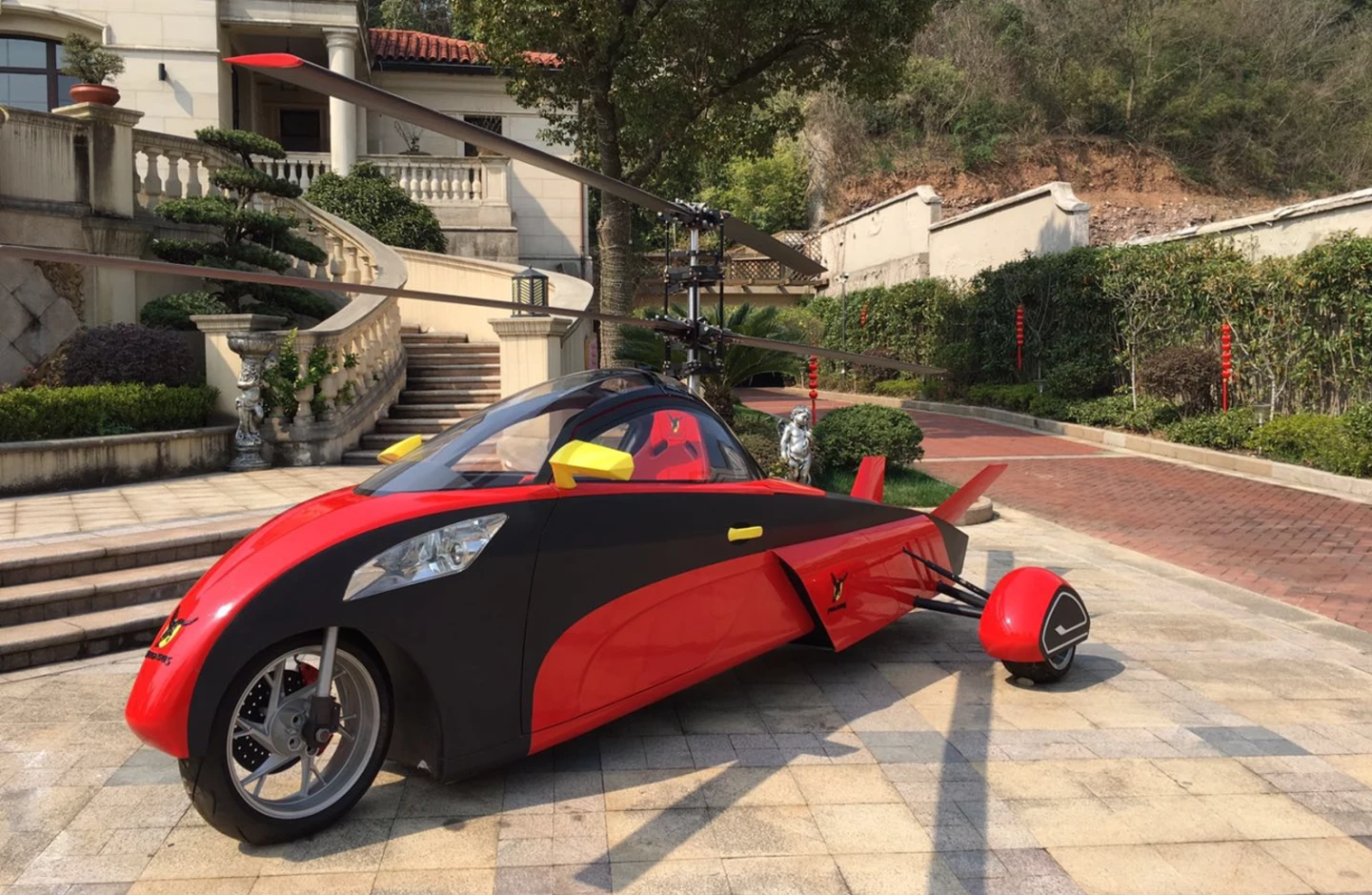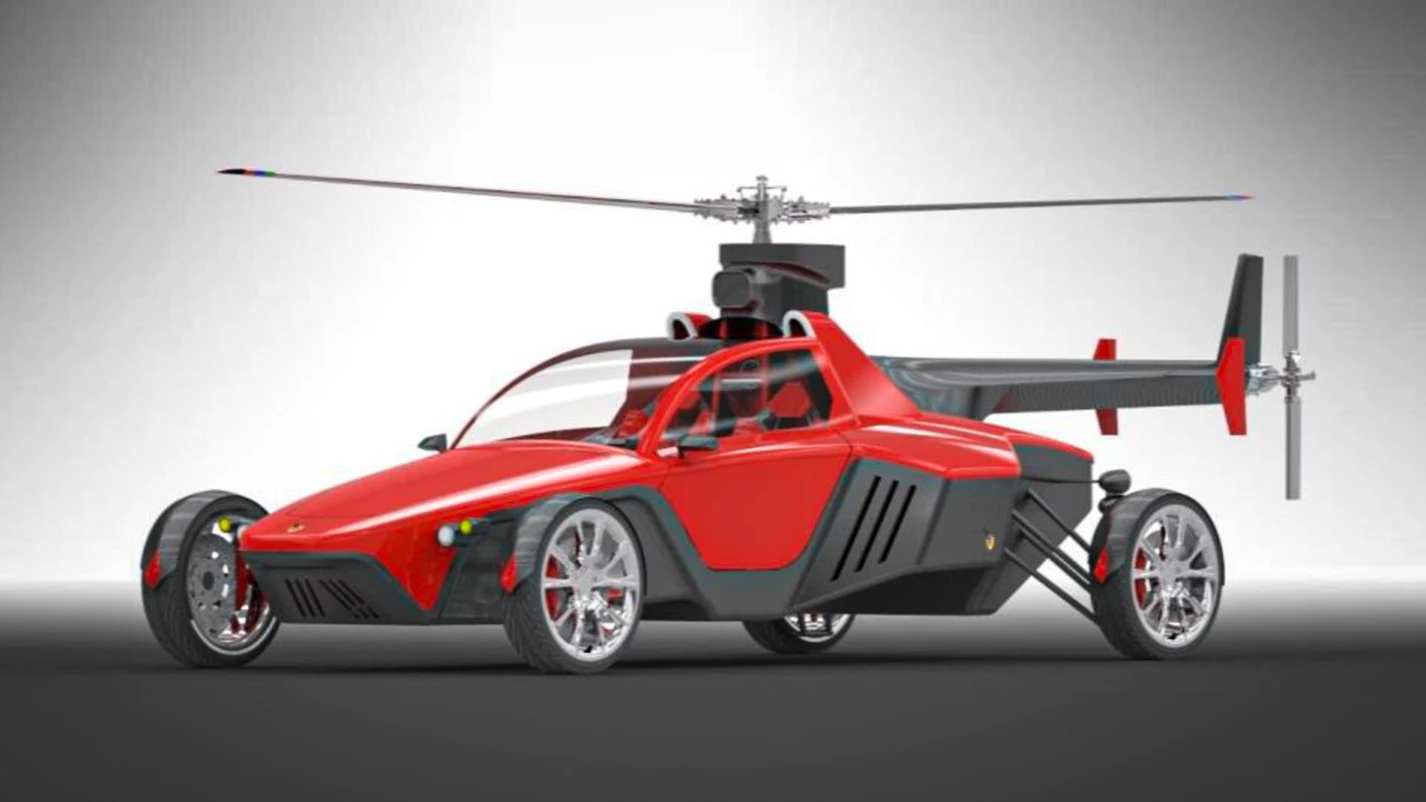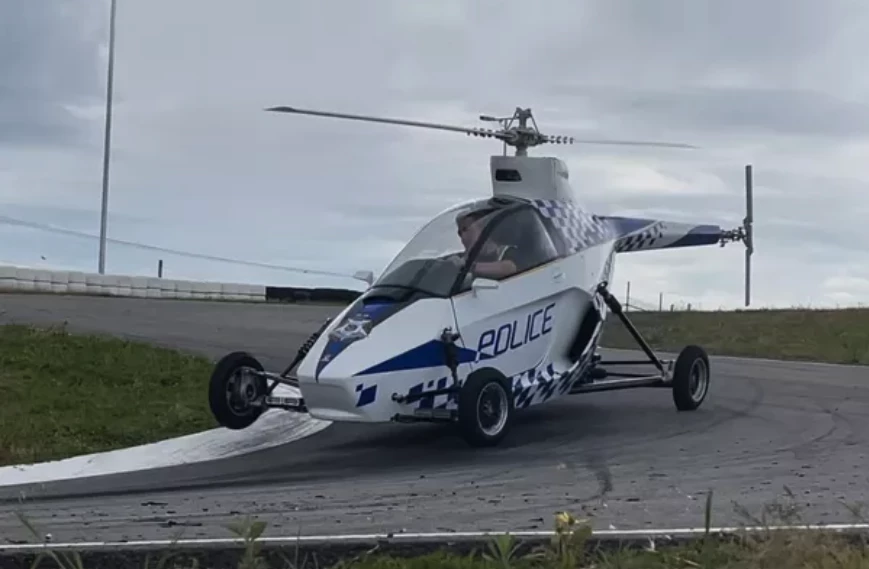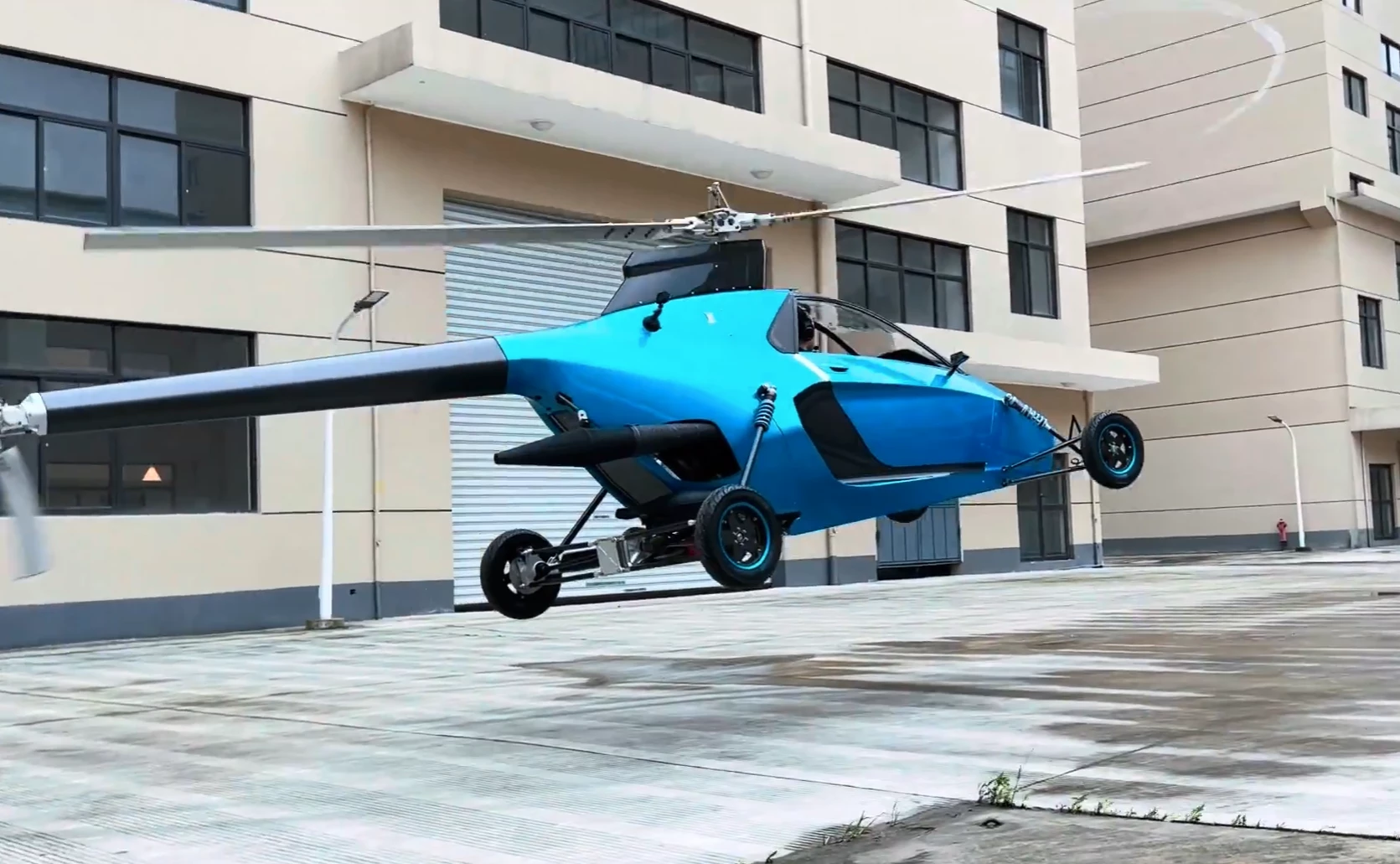Based in Melbourne, Australia – but clearly also with a presence in China – Pegasus is now moving its head office and production facilities to Las Vegas. The company says it's been working on its flying car design since 2009. Indeed, the project looks well advanced, and the company's naked early prototypes, first flown around 2016, have long since given way to the handsome, fully-enclosed Pegasus E, which made its debut in 2021.
Effectively, it's a small, single-seat helicopter with automatic quick-fold rotor blades, with a bare-bones open-wheel vehicle chassis grafted on, using carbon fiber rods. It's not precisely clear exactly where the electric part of the hybrid drive system comes in, but the combustion power appears to come from a lightweight, buzzy "Pegasus 800" two-stroke, making around 160 horsepower.
Before we get any further, you have to see this frankly insane "only in China" urban flight test footage, shot in what appears to be a deserted industrial estate.
Pegasus gives a dry weight of 265 kg (585 lb), so it won't qualify as an ultralight. But on a full 60-liter (16-gal) tank, it'll fly with a useful payload of 101 kg (222 lb), at speeds up to 160 km/h (100 mph) and altitudes up to 1,800 m (5,900 ft) – and its 3-hour, 420-km (261-mile) range is a lot more than fully-electric eVTOLs can currently deliver.
On the road, despite its tiny wheels, the Pegasus E can handle highway speeds, although there's an electronic limiter preventing it going any faster than 120 km/h (75 mph). Its compact size allows it to fit into standard garages, as well as regular size parking spots, ticking a couple of boxes for practicality.
And when we say it handles like a go-kart ... Well, look at this thing getting a proper wheel-up, sideways flogging on an actual go-kart track, complete with a Victoria Police paint job. Honestly, it looks like way too much fun.
The carbon-fiber bodywork curiously includes two upward-opening doors – that's an odd way to waste weight on a single-seater. But the controls seem to be done in a nice, tidy way, including three foot pedals that do double duty between drive and fly modes, a steering wheel for driving and (we assume) collective and cyclic sticks for flying. And yes, in terms of safety, you can autorotate these machines to a gentle landing if you know what you're doing.
Pegasus says it's achieved an airworthiness certificate with Australia's Civil Aviation Safety Authority, allowing it to be flown under existing regulations. This CASA certificate, says the company, should allow it fast-track access to a similar registration when it hits US shores in the coming months.
In Australia, you currently need a recreational helicopter pilot's license to fly this machine – but US owners might not. "It is possible to fly the Pegasus without a pilot's license," reads the company website, "if you have successfully completed the FAA private Pilot written examination and have also completed the company-mandated vehicle familiarisation and operator training programs."
As far as road registration goes, well, that may prove more difficult. Pegasus says "VicRoads certification is in process," but it's unclear exactly how this thing could qualify as a car. It'll need headlights, taillights, indicators ... Oh, and full crash testing, airbags, emissions certification (good luck with that two-stroke) and lord knows what else to be sold with road registration in Australia.

There may be a little less red tape in the United States, but typically these types of vehicles tend to go for three-wheel layouts, because they can then qualify as motorcycles, and dodge a lot of the more stringent safety checkboxes. Four wheels gets a lot more complicated.
So perhaps the version most likely to sell in the US is the three-wheel Pegasus Sports above, which drops the tail rotor and instead uses a stacked coaxial top rotor system.
But according to Urban Air Mobility News, the specific model that seems to be going on sale is the four-wheel, two-seat, side-by-side "Air Ferrari" below. It's a bold move to use somebody else's trademark like that in a corporate communication, and it sounds a little like a lawsuit in waiting to our ear, but it definitely looks cool in the renders.

We've reached out to Pegasus and hope to learn more about this project – as well as the company's plans for four-seat versions, larger air taxi operations and more. Meanwhile, the team is looking for investment to take production from 10 expected units in 2025, up to 900 units per year by 2030, with an ambition to become the world's leading flying car manufacturer.
As far as pricing, that's for customers only at this stage, but apparently in the realm of a decent supercar, which is about what we'd have expected. The current prototypes certainly look like tidy little products, so it'll be fascinating to see how things go with road certification.
Source: Pegasus via Urban Air Mobility News








